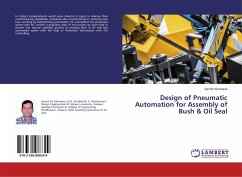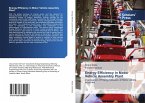An assembly line is a manufacturing process in which parts (usually interchangeable parts) are added to a product in a sequential manner using optimally planned logistics to create a finished product much faster than with handcrafting-type methods. The assembly line developed by Ford Motor Company between 1908 and 1915 made assembly lines famous in the following decade through the social ramifications of mass production, such as the affordability of the Ford Model T and the introduction of high wages for Ford workers. However, the various preconditions for the development at Ford stretched far back into the 19th century, from the gradual realization of the dream of interchangeability, to the concept of reinventing workflow and job descriptions using analytical methods. Ford was the first company to build large factories around the concept. Mass production via assembly lines is widely considered to be the catalyst which initiated the modern consumer culture by making possible low unit-cost for manufactured goods. It is often said that Ford's production system was ingenious because it turned Ford's own workers into new customers.
Bitte wählen Sie Ihr Anliegen aus.
Rechnungen
Retourenschein anfordern
Bestellstatus
Storno








